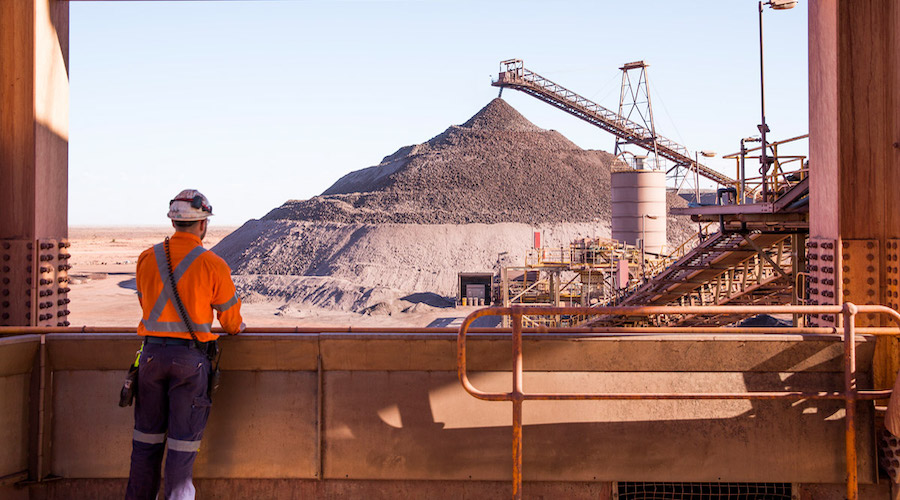Mega miners are hunting for deals after decade on the sidelines

In the rush of the 2000s commodities boom, the world’s biggest miners earned a reputation as swashbuckling dealmakers, taking on rivals in an onslaught of hostile offers, massive mergers and vicious bidding wars.
Then it all fell apart. A series of disastrous transactions meant balance sheets got shredded, bosses got fired and investors were furious. And so, for the past decade, miners have focused on mining and the mega deals mostly dried up.
But now their penitence is over.
Across the mining world, the appetite for large, transformational mergers and acquisitions has returned, based on multiple conversations with executives at large producers and bankers who advise them. The industry is flush with cash after last year’s record profits, while boards and managers believe they have the support of key investors after promising to avoid the reckless overspending of the last cycle.
No. 1 producer BHP Group is interested in even bigger deals after announcing a $6.4 billion copper purchase last month. Rival Rio Tinto Group is actively looking for lithium acquisitions. Mining and trading giant Glencore Plc is focused on “strategic” opportunities that build on existing connections, its chief executive said last month, while Saudi Arabia’s state mining company last week announced a new venture to invest in overseas assets.
The mining sector is also in the middle of its biggest strategic pivot since the China-led supercycle at the start of this century. The largest producers are at various stages of exiting or winding down fossil fuel operations, while expanding in commodities such as copper, nickel and lithium that will be central to decarbonizing the global economy.
BHP and Rio already got the ball rolling last year, both announcing their biggest deals in years to add more copper.
BHP executives believe the agreement to buy OZ Minerals Ltd. has reestablished its credentials among shareholders — proving the company can get a deal done without overpaying — and paved the way for even larger transactions.
The biggest miner had already expanded its dealmaking team in London and was interested in pursuing a transformational deal, Bloomberg reported last year. The company has recently exited oil and gas and vowed to end thermal coal mining by the end of the decade. To replace those businesses, it’s looking to expand in copper and nickel and grow a fertilizer business.
BHP would be interested in the possibility of deals at the right price with companies such as Canadian fertilizer producer Nutrien Ltd. and US copper giant Freeport-McMoRan Inc., according to some of the people.
Nutrien’s mines and infrastructure surround BHP’s Jansen project — it has long been seen as a natural fit and the companies held talks about a potential partnership two years ago.
Freeport is the world’s largest publicly traded copper producer, at a time when the world’s biggest mining companies are all pushing to expand production.
Another large copper producer — Canada’s Teck Resources Ltd. — is controlled through a dual-class share structure by the Keevil family, but could make an appealing target for one of the big miners if the family were willing to sell or merge part of the business.
The renewed focus on dealmaking comes as the miners themselves are receiving increased attention from both governments and investors, after the uncertainties created by Russia’s invasion of Ukraine helped spur worries about security of supply, driving up commodity prices. Metal markets are tight, with above-ground supplies for several at the tightest in recent history, while China’s reopening from Covid-19 lockdowns is threatening to jolt global demand. Over the longer term, the global drive to decarbonize will be dependent on an ever-increasing supply of natural resources.
Yet the rich valuations, with many miners trading at or near records, could also put a damper on dealmaking unless a wider global recession leads to lower commodity and equity prices. The big producers are also continuing efforts to refine their existing asset portfolios at the same time as they seek growth.
Most of the major miners are also keen to grow output by expanding existing mines or though exploration and building new ones. The industry has been warning for years that there aren’t enough copper projects to meet future demand, and big deals often don’t bring on new production unless fresh capital can be deployed.
Like BHP, Rio Tinto made a big purchase last year, taking full control of Turquoise Hill Resources Ltd. in a $3.2 billion deal. The takeover was messy, with a vote postponed three times as Rio sought to win support from dissident shareholders. However, executives believe it showed investors that Rio can hold its nerve to resist the reckless spending that characterized its past dealmaking.
New Chairman Dominic Barton said at a conference in October that he believed the company had missed opportunities in recent years, in part because of concerns about investors’ reaction because of previous missteps.
Rio’s dealmaking focus has now shifted to lithium. The company has asked the biggest investment banks for pitches on lithium miners and is actively looking for deals.
Glencore, for so long the most aggressive dealmaker in the sector, has been quiet in recent years, instead choosing to sell many of its smaller assets.
Speaking to investors last month, CEO Gary Nagle emphasized that its focus would be on targets where it had existing relationships or shareholdings, or assets that were nearby its existing operations.
“These will be ones that are strategic for Glencore, where Glencore has some sort of strategic advantage, whether it be because we are — have existing shareholding, whether we have existing partnerships with the current owners,” Nagle said. “These will be very strategic M&A opportunities and not simple highest bid wins.”
One area where Glencore sees opportunities is aluminum, which the commodities trader buys and sells for others but does not produce itself. The company has looked in the past at a deal to buy US producer Alcoa Corp. Last year, it held discussions with Noble Group to buy Jamaican alumina refinery Jamalco, but the talks fell apart, people familiar with the matter said.
Still, perhaps the most pressing item on Glencore’s to-do list is to decide the future of its Viterra agriculture business. The company’s options are to merge the business with a rival, sell a stake or an initial public offering.
The large, established producers aren’t the only ones looking for deals. State-backed Saudi Arabian Mining Co., or Maaden, announced a plan last week for a company that will buy minority stakes in international mining assets.
Maaden brings the financial muscle of its biggest shareholder, the Saudi sovereign wealth fund, which is also a partner in the new investment venture and was among the interested buyers of a minority stake in Vale SA’s nickel and copper assets.
Most of the major miners are also keen to grow output by expanding existing mines or though exploration and building new ones. The industry has been warning for years that there aren’t enough copper projects to meet expended demand in the future, and big deals often don’t bring on new production unless fresh capital can be deployed.
“A lot of these guys don’t have much growth and deals are a way to address that,” said Liberum analyst Ben Davis. “The size perspective is key though. It’s going to be hard to do the mega one.”
(By Thomas Biesheuvel, Dinesh Nair and Jack Farchy, with assistance from Archie Hunter, Annie Lee, Jacob Lorinc and Joe Deaux)
{{ commodity.name }}
{{ post.title }}
{{ post.date }}


Comments
Alan Briston
Wealth Minerals Ltd {WML] is the company that could benefit enormously from the opportunities that abound at this time